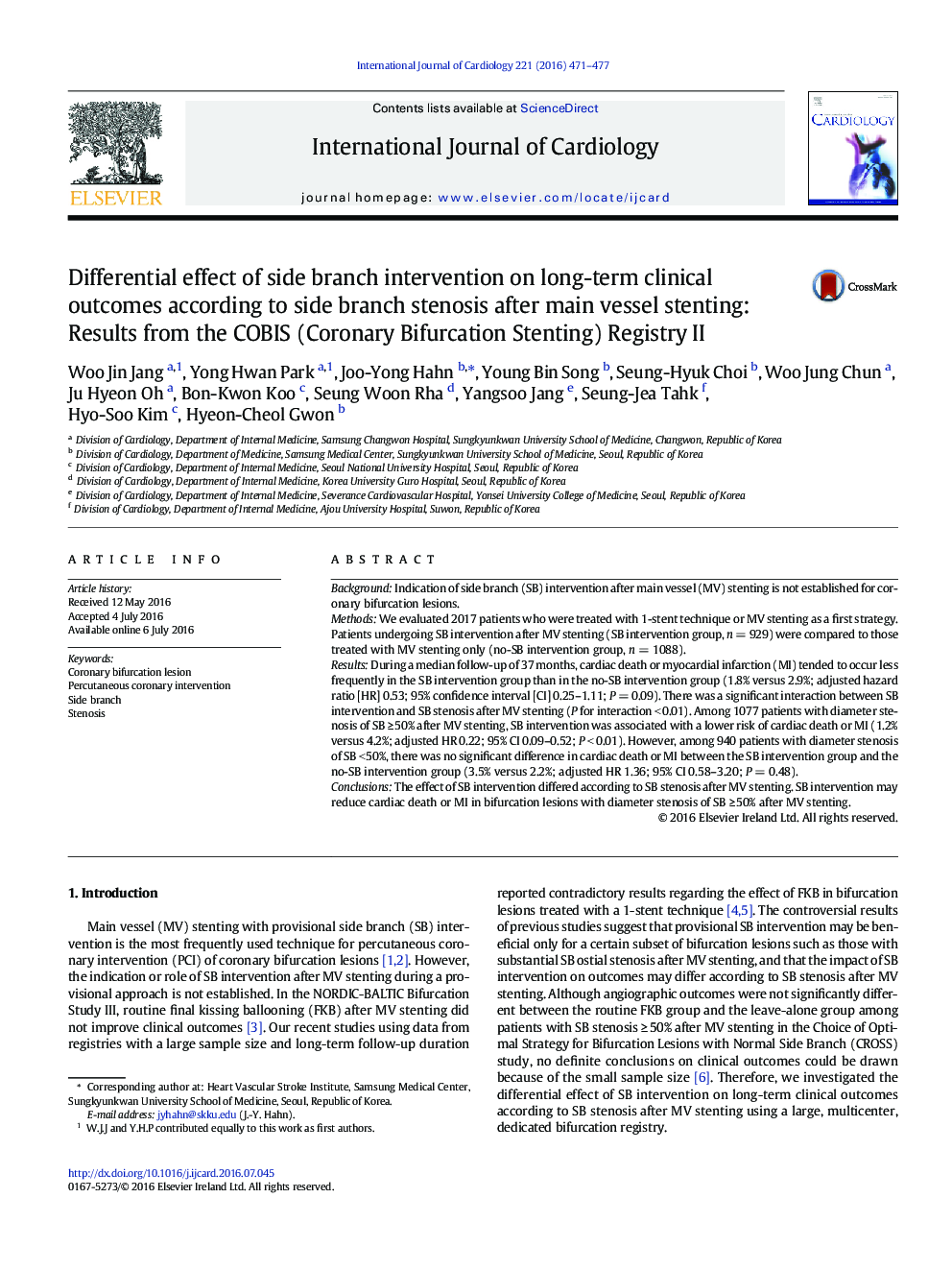| Article ID | Journal | Published Year | Pages | File Type |
|---|---|---|---|---|
| 5963014 | International Journal of Cardiology | 2016 | 7 Pages |
BackgroundIndication of side branch (SB) intervention after main vessel (MV) stenting is not established for coronary bifurcation lesions.MethodsWe evaluated 2017 patients who were treated with 1-stent technique or MV stenting as a first strategy. Patients undergoing SB intervention after MV stenting (SB intervention group, n = 929) were compared to those treated with MV stenting only (no-SB intervention group, n = 1088).ResultsDuring a median follow-up of 37 months, cardiac death or myocardial infarction (MI) tended to occur less frequently in the SB intervention group than in the no-SB intervention group (1.8% versus 2.9%; adjusted hazard ratio [HR] 0.53; 95% confidence interval [CI] 0.25-1.11; P = 0.09). There was a significant interaction between SB intervention and SB stenosis after MV stenting (P for interaction < 0.01). Among 1077 patients with diameter stenosis of SB â¥Â 50% after MV stenting, SB intervention was associated with a lower risk of cardiac death or MI (1.2% versus 4.2%; adjusted HR 0.22; 95% CI 0.09-0.52; P < 0.01). However, among 940 patients with diameter stenosis of SB < 50%, there was no significant difference in cardiac death or MI between the SB intervention group and the no-SB intervention group (3.5% versus 2.2%; adjusted HR 1.36; 95% CI 0.58-3.20; P = 0.48).ConclusionsThe effect of SB intervention differed according to SB stenosis after MV stenting. SB intervention may reduce cardiac death or MI in bifurcation lesions with diameter stenosis of SB â¥Â 50% after MV stenting.
